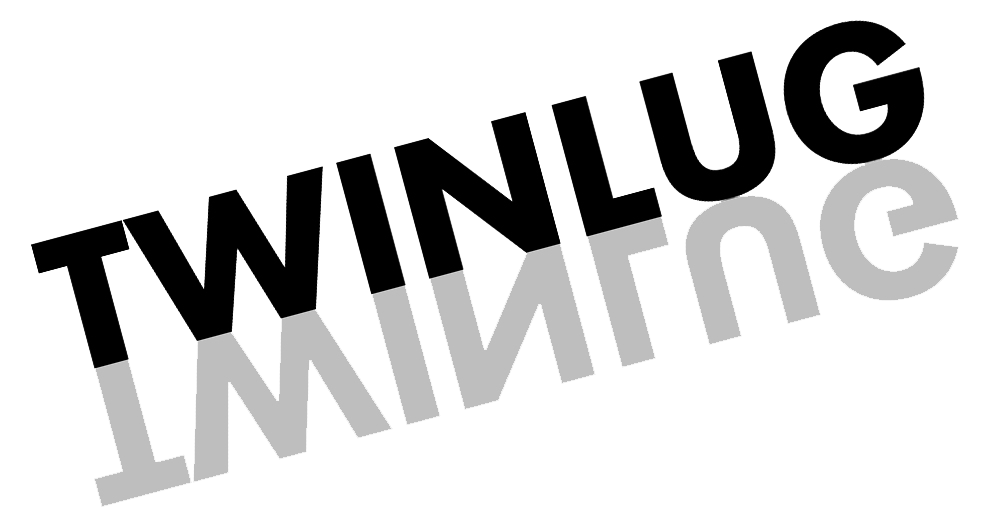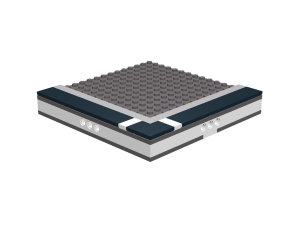"Micropolis" Micro City Standard
Version 1.1 – May 14, 2010
A standard to allow individual builders to build modules to add to a micro scale city in a group build.
A 16 x 16 stud Module equals 1/4 of a city block. Four Modules create a short block in a city. Each four module block is ringed with a two stud road. Blocks connected together create a 4 stud wide road. Cars are 2 studs, buses or trucks 4 studs.
Scale: 1 brick is 9 feet, 1 plate is 3 feet and one stud is 7.5 feet. These are for reference only. The blocks are smaller than the blocks in a real city. Scale your buildings accordingly.
Base Module
A sandwich of plates and bricks create the base of the module. One plate layer for the bottom, one brick layer on top of that, one plate layer on top of the bricks. 1 x 2 Technic bricks with one hole are in the stud 8-9 positions on each side. There are 4 technics bricks used. This allows the modules to be connected with Technic pins.
Roads, Alleys and Sidewalks: The two outer rows of studs on two sides are the roads, the opposite two sides contain the optional alleys, and the sidewalks parallel the roads. Use two rows of black tiles for roads. Crosswalks are a 1 x 2 white tile at the 4th stud position from each corner. Use 1 row of dark gray tiles for alleys and parking lots. Use light gray tiles for sidewalks, although alternate colors can be used to tie the sidewalk to the building.
Download a Model File!
We have put together a generic model of the base module in LEGO Digital Designer so anyone can get started building their own Micropolis right away.
Micropolis Module Base (LXF)
Bluff and Waterfront Modules
The version 1.1 specification has been extended to include Bluff modules
which allow for vertical expansion and Waterfront modules which allow
for adding water in a standardized way to a Micropolis layout. These
extensions have their own pages of specifications.
You can view the Micropolis Bluff specifications here!
You can view the Micropolis Waterfront specifications here!
Frequently Asked Questions
Q. Can I see some pictures of a Micropolis layout?
A. Absolutely. Over the past years many group members and other AFoLs
around the world have built quite a large variety of different modules
and images of many of them can be found in the Micropolis Flickr Pool.
Two of our members have amassed quite a collection of modules over the
years and photos of most of them along with layouts that they have
participated in are available at Virtual Micropolis. If you have built a module please let us know! We always love to see what people are doing with the spec!
Q. Why 16×16 modules?
A. We wanted to make the smallest discrete module something that anyone
with even a very modest collection of LEGO bricks could fairly easily
put together.
Q. Where can I get enough parts to build a module?
A. The hardest part for people with smaller collections will probably be
the tiles used for the roads and sidewalks but those can be fairly
easily sourced from LEGO Sets, Pick-A-Brick, BrickLink, or other builders.
Q. Why not use baseplates instead of plates for the bottom of the modules?
A. While some builders have many 16×16 baseplates available in their
collections others don’t have any. While currently 16×16 baseplates are
available for sale new from The LEGO Group, since they are not as thick
as the plates used in existing modules they would produce an
inconsistent looking layout.
Q. What if I wanted to build a bigger module?
A. Go for it! Some ideas just won’t fit on a single 16×16 module. In our
own layout we have a combination of 16×16, 16×32, 32×32, and several
much larger modules and some members have talked about ideas that are
even larger than that! However in order for the module to be compatible
with a group build it should be “self-contained” and include the Technic
bricks at appropriate locations and have the standard road and sidewalk
borders so that when it is included with other modules the roads and
sidewalks are contiguous.
Q. Why 32×32 city blocks?
The basic answer is simplicity. If you are going to invite 100
people to come up with a module to bring to an event the only way
that goes really smoothly with very little coordination is if the
spec is simple.
The problem with rectangular blocks or oversized blocks is that you need at least two different kinds of modules to fill the shape properly. For example, our basic 16×16 module has streets and sidewalks on two sides. Let’s call that Module A. A standard 32×32 Micropolis city block then can be assembled with four of these types of modules:
AA AA
A small rectangular block that is 32×48 and contains up to six 16×16 modules has to have a second module type that only has streets and sidewalks on one side to fill between the ends of the block. We’ll call that Module B. Rectangular blocks then get assembled in just about any length by filling between the ‘A’ modules with ‘B’ modules like so:
ABA ABA
Or if you’re into late 70’s pop music:
ABBA ABBA
Or if you like badly designed suburbs with no cross streets:
ABBBBBBBBBBBBBBBBBBBBBBBBBBBBBBA ABBBBBBBBBBBBBBBBBBBBBBBBBBBBBBA
Larger square blocks are even more complicated because you need to fill in the middle of the block with modules that have no streets and sidewalks. Let’s call that Module C. Larger square blocks then get assembled in just about any size by filling in the middle of the ‘A’ and ‘B’ modules like so:
ABA BCB ABA
ABBBA BCCCB BCCCB ABBBA
Things get really weird when you start talking about non regular blocks with cutouts and cul-de-sacs. At that point we should probably start talking about counting points of shared infrastructure and their configuration which honestly sounds like a whole bunch of fun in about five years but is a bit much for the early versions of the spec. We are not saying that it’s impossible to manage such a thing just that for a simple spec that it’s a bad idea and that keeping things to very simple 32×32 blocks with exceptions for oversized modules that are normally bordered with streets and sidewalks keeps things simple and very easy to assemble from hugely disparate builders.
Q. In the pictures of your layout what part did you use for the crosswalks?
A. During the build of our first layout someone had a black tile with some printed striping
from the old LEGO Studios sets. A generous member went out to BrickLink
and bought a pile of them and in the past we have used them in many of
own layouts. Due to the relative scarcity of this part we have been been
slowly changing over to using the standard white 1×2 tile and find that
a layout that uses a combination of the two looks okay. There has been
quite a bit of talk about acquiring or producing custom printed tiles
for this purpose but no actual effort has occurred yet.
Q. Why are the Technic bricks in different places in pictures of early layouts?
A. An early “beta” version of the spec had two Technic bricks on each
side at studs 3-4 and 13-14. As we worked on the layout we noticed that
the extra pin holes were unnecessary and in some cases were actually
making it harder to assemble the layout so for our first published spec
we changed to one Technic brick per side and are working on converting
our existing modules.
Q. Does it matter if I fill the base of a module with bricks or leave it open under the top plate?
A. It depends on what you have on top
of the module but in most cases you can save on part count by leaving
most of the interior of the module base open though a brick or two in
the middle tends to help when building on top. Some builders fill their
bases completely while others leave them very open. Some modules even
use the space creatively for basements or other below ground level
features.
Q. Can I put X on my module?
A. It depends a bit on the exact
details of “X”, but for the most part the answer is yes. The entire
purpose of this specification is to allow for the simple conglomeration
of modules from highly disparate sources without having to worry about
if a particular module will fit with the rest of the layout too much. If
you build something that has the required roads, sidewalks, technic pin
holes, and height that is all that matters. Technically you could take a
base module and cover the rest of the available space with green tiles
and call it a lawn. I don’t think that makes for a very interesting
module, but it would absolutely work within the context of a larger
Micropolis layout because the roads, sidewalks, technic pin holes, and
height all matched up.

